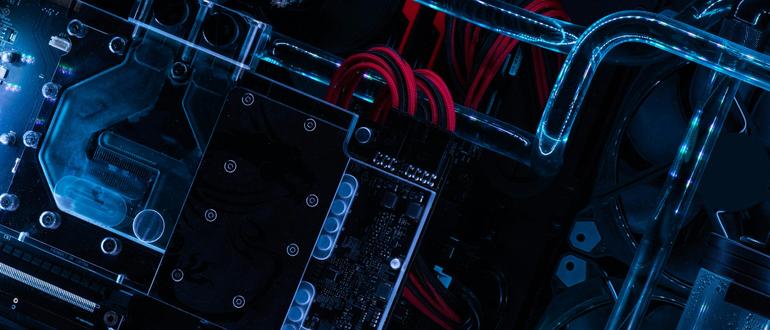
A team of experts at the University of California San Diego has created a new liquid cooling technology that could significantly boost data center energy efficiency. The new technology passively drives heat loss through evaporation by using a complex fiber membrane, an advance that may support better cooling rates and lower water levels than current liquid cooling methods.
The membrane at the center of this new liquid cooling system is low cost. Positioned just above the electronics, the membrane uses its extensive network of pores to expand cooling liquid across a wide surface using a capillary action. The liquid, having gathered the heat from the underlying electronics, then evaporates and dissipates the heat.
“Compared to traditional air or liquid cooling, evaporation can dissipate higher heat flux while using less energy,” said Renkun Chen, professor in the Department of Mechanical and Aerospace Engineering at UC San Diego. Chen was the project’s co-lead along with professors Abhishek Saha and Shengqiang Cai. The co-first authors of the study are postdoctoral researcher Yu Pei and aerospace engineering doctoral student Tianshi Feng. Their work is published in the academic journal Joule.
The practice of using evaporation to aid cooling is commonplace, but using it in the energy-dense environment of electronics has always offered design challenges. Porous membranes are a logical choice due to their large surface area, but previous designs used pores that were not the optimal size, sometimes causing boiling or clogging. The UC San Diego team found an optimal size pore that enabled evaporation without the negative results.
Over the course of testing, this new membrane technology was stable over multiple continuous hours. It achieved heat fluxes greater than 800 watts of heat per square centimeter, an exceptionally high level for liquid cooling.
The UC San Diego team is now working to further improve the design, which they say has far greater upside in terms of energy efficiency. They plan to create a prototype built with cold plates that are connected with GPUs to produce more heat dissipation. The group is starting a company with the goal of turning their work into a viable product.
While air cooling is the dominant form of cooling for data centers, used in approximately 85% of deployments, the use of liquid cooling systems is clearly growing. Liquid cooling presents higher upfront costs and is more complex technology to implement than air cooling, but it’s more energy efficient and is far more scalable, especially for AI and other high performance computing deployments.
Liquid solutions near GPUs offer far better thermal conductivity than legacy air cooling like fan systems or heat sinks. As a result, adoption of liquid cooling is most common among the leading hyperscalers, which have both the greatest data center energy needs and the largest budgets.
Uptime Institute, a global advisory group that specializes in improving the performance of digital infrastructure, forecasts that liquid cooling will reach 20-30% by 2030. Similarly, Omdia, an advisory firm focused on telecom and tech, predicts a 35% CAGR for liquid cooling through 2028. Liquid cooling is also useful for an array of electronics systems in addition to data centers.

